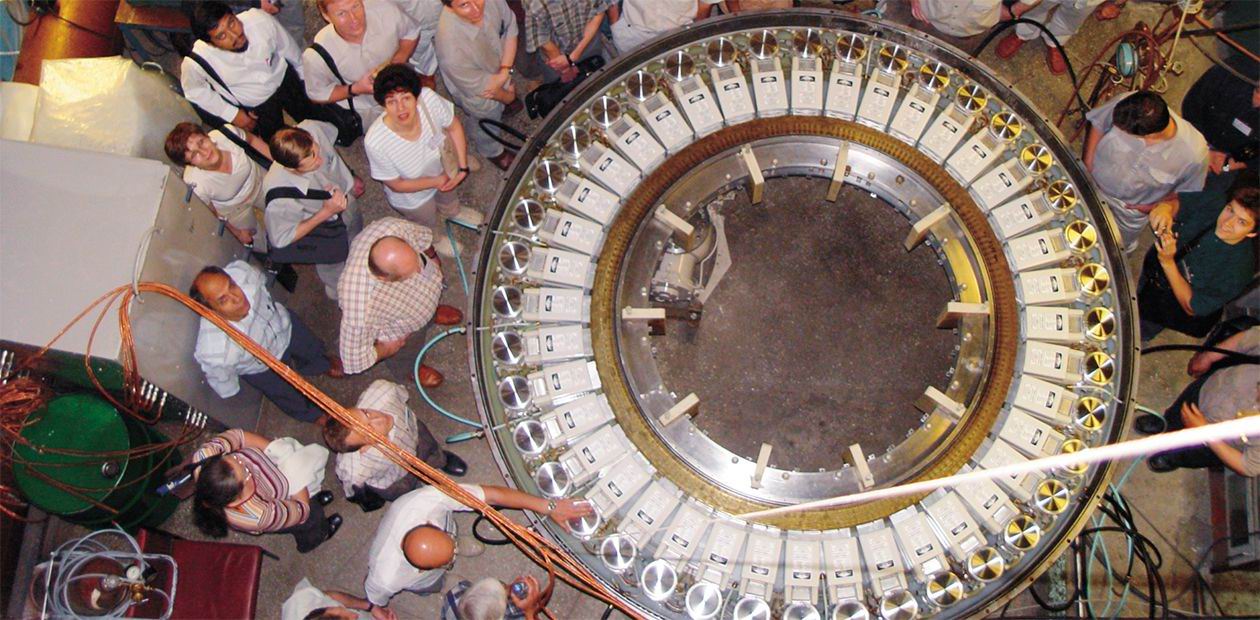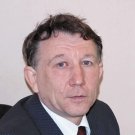Tomsk Pulse
Thirty years ago (in 1977), the Institute of High-Current Electronics of the Siberian Branch of the Academy of Sciences of the SSR was founded in the Tomsk Akademgorodok. Thus, a novel research direction was officially recognized.
Research in a new field of physics (high-current electronics) was started in the 1960s by a team of scientists headed by G. A. Mesyats, a future member of the Russian Academy of Sciences, first, at the Institute of Nuclear Physics at the Tomsk Polytechnical Institute and, then, at the Institute of Atmospheric Optics. This research team was the basis of the Institute of High-Current Electronics of the Siberian Branch of the Academy of Sciences of the USSR established in 1977. The new activities also included various branches of physics, such as the development of methods of generation of superpowered electric pulses, production of fluxes of charged particles and electromagnetic radiation, physics of vacuum and gas discharges, and investigation of the effect of powerful fluxes of particles and energy on matter.
With a nuclear explosion force
Powerful pulse equipment is the flesh and blood of high-current electronics. In high-current generators, electric energy is first slowly accumulated in capacitors, then it is converted, and finally it is rapidly ejected from the capacitors in the form of a short electric pulse (of millionth or billionth fractions of a second). The voltage in this pulse can reach millions of volts, the current can reach millions of amperes, and the power can reach several terawatts. (1 TW is 1 billion kW; for comparison, the power continuously generated by the Krasnoyarsk Hydropower Station is only 0.006 TW.)
The Institute of High-Current Electronics has developed the largest electrophysical facilities for basic research in the field of plasma physics and development of new technologies, such as terawatt generators GIT-12, GIT-4, MIG, and dozens of smaller universal and special devices.
An important area of potential application of such pulse equipment is the inertial thermonuclear fusion. Beginning from the second half of the 1990s, the Institute has been involved in the development of induction generators of new generation whose power is so high that they can be connected to the resistance without using additional stages of energy compression. Today US scientists have recognized this as the most promising approach to the construction of superpowered generators for pulse thermonuclear fusion with electrodynamic compression of the target. Pulse sources for pumping systems in solid-state lasers produced at the Institute are planned to be used in the LMJ laser thermonuclear fusion facility, which is under development in France.
The creation of pulse facilities with critical characteristics allowed the scientists to start physical research of matter under conditions of an extremely high energy density. Owing to experiments with electrodynamic compression of matter, pulse magnetic fields of dozens of millions of gauss’s and pressures of dozens of millions of bars were obtained. Three- to fourfold compression could be reached under laboratory conditions for solids conventionally believed to be incompressible. Before that, it was assumed that such a state of matter could be reached only inside nuclear explosions. It was experimentally shown that the matter compressed by a magnetic field with megaampere currents becomes a source of superpowered flashes of both soft and hard X-ray emission; this phenomenon can be used in pulse radiography.
Effect of explosive emission
As early as the mid-1960s, scientists from Mesyats’s team performed unique experiments and described the mechanism of the electric breakdown in vacuum, which was called explosive emission. The essence of this phenomenon implies that thermal explosive breakdown of microscopic segments of metal with the formation of a dense plasma occurs during the time expressed in billionth fractions of a second under the influence of a strong electric field generated near the metallic surface in vacuum. It is from this plasma that electrons are extracted under the action of the electric field applied, the current densities being orders of magnitude higher than those typical of all other known types of emission.
As the mechanism of explosive emission of electrons had been explained, it became possible to create cathodes capable of generating pulse electron beams with previously unreachable current values. Powerful pulse lasers, X-ray tubes, and accelerators of charged particles were developed, which allowed the generation of superpowered pulses of microwave radiation.
The results of research of the effect of external ionizing radiation on the formation of a high-pressure pulse discharge were registered in 1989 as a scientific discovery. The use of volume gas discharges allowed obtaining important results in powerful laser instruments. Thus, ionization of the working gas by a high-current electron beam provided a uniform discharge in a laser medium with a volume up to one cubic meter. This allowed creating CO2 lasers with a record-breaking energy in the pulse up to 5 kJ.
The Institute is currently an active participant of a large Russian scientific project aimed at creating a laser system of petawatt power; a superpowered and supershort laser pulse with a space duration of only 15 microns will become a new tool for basic research of matter.
Faster, higher, stronger!
Undoubtedly, the ancient Olympic motto could refer to high-current electronics. Current could be stronger, power could be higher, and pulse could be faster; this road can be pursued infinitely. Yet, the rigorous requirements of industrial society to science make scientists turn away from record breaking and prove that science is economically beneficial. In this aspect, basic research in the field of high-current electronics produced a rich harvest. As an example, we only name some technologies that involve charged particles and plasma flows for surface treatment.
If a metallic article is placed into the plasma of an arc gas discharge, the surface of this article can be cleaned and coated by a nanostructural composite coating whose hardness approaches that of a diamond! Plasma-beam metallurgy allows creating surface alloys whose composition and properties cannot even be imagined within the framework of conventional methods.
The plasma allows coating application on nonmetallic materials as well. Many Siberian enterprises employ the technology of application of heat-insulating coatings onto architectural glass; production of a less expensive heat-insulating polymer film with a transparent nanocrystalline coating is expected in the near future.
If a metallic sample is exposed to a pulse high-current electron beam, its surface can be instantaneously polished like a mirror, no matter how complicated the shape of this surface is. Melting under the beam and rapidly cooling, a thin metal layer is cleaned from impurities and acquires a nanocrystalline structure with properties of high hardness, wear resistance, and corrosion resistance. This technology can also be applied to brittle superhard instrumental alloys.
1976. Discovery of explosive emission of electrons is recorded in the State Register of Scientific Discoveries
In 2003, the pulse electron-beam technology developed at the Institute of High-Current Electronics was recognized in Japan as the “technology of the year,” and the number of facilities produced there on the Institute’s license exceeded one hundred. The Institute’s scientists believe that the electron-ion-plasma technologies of surface processing of materials and articles will be soon required in the Russian machine building industry as well. Good traditions, advanced equipment, mobility and flexibility of the team, and careful attention to young scientists are the components of the success, which will allow the Siberian high-current electronics, despite the difficult situation in Russia, to further develop and conquer new positions at the worldwide market of high technologies.
A. V. Kozyrev, doctor of Physics and Mathematics,
I. V.Pegel’, doctor of Physics and Mathematics
(Institute of High-Current Electronics, Siberian Branch,
Russian Academy of Sciences, Tomsk Scientific Center)







